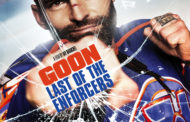 Have you ever wondered about meeting an alternate version of yourself? Meeting someone that is exactly like you? It sounds like a cool idea. But what if they switched places with you? Tried to live your life, while you live theirs? Wouldn’t it get confusing and make you feel out of place? Welcome to the world of Coherence, a film by James Byrkit that explores those very questions. It keeps you on your feet the whole time, constantly guessing at the identities of a family who has to deal with the mystery of if there are people just like them out there…and what they might do.
Have you ever wondered about meeting an alternate version of yourself? Meeting someone that is exactly like you? It sounds like a cool idea. But what if they switched places with you? Tried to live your life, while you live theirs? Wouldn’t it get confusing and make you feel out of place? Welcome to the world of Coherence, a film by James Byrkit that explores those very questions. It keeps you on your feet the whole time, constantly guessing at the identities of a family who has to deal with the mystery of if there are people just like them out there…and what they might do.
The film does a curious tactic to keep your attention: it makes the style of the film the focus of the piece until the time that the narrative naturally engrosses you. To say the film starts slow isn’t accurate—it merely tricks you into thinking you are watching a more atypical film. The movie starts off with an entire family gathered and catching up. It seems like a typical set-up scene, but the way the audience is brought into the family is top notch. The dialogue is the first aspect that is noticed, in that it’s hard to call it dialogue at all in the early minutes. It’s banal, everyday conversation, not concerned with plot twists or exposition, just the random discussions people would have who have recently reconvened. This relaxed wordplay seems more out of an artsy type film than a traditional thriller. Which is where the next great aspect of Coherence comes in. In the early part of the film, scenes are not treated in the traditional manner that one would expect. Each segment starts off with a close-up of an inanimate object, usually a coffee cup or a piece of fruit, while basic conversation swirls around it. The camera pans out to reveal the family, and the scene unfolds. The content of each section isn’t necessarily special (aside from the basics of moving the plot along), but what is of interest is that the screen cuts to black instantly after the main emotional beat of the scene is over. There is no time for reflection, no time to for a character to react. The audience is just thrust into darkness, and the next section begins. As the plot picks up steam, these sections are used less and less. Why? Because Byrkit wants to get the audience into the state of confusion and incoherence from the very start. Since the content at the time is clear and obvious, the way to create confusion is to film it in a thought-provoking way. This method gets the job done, until it is time to ramp up the tension.
After the first twenty or so minutes, the film truly gets underway. A comet passes over the family gathering, the lights go out, and two members leave to investigate. They come back with a box from a house two blocks away—the only house with lights on. The box contains pictures of the family, and the mystery begins. Each time a character debates doing an event, they find another version of themselves has already completed it. One man starts to write a note to the neighbors, only to have a knocking at the door reveal the already completed note taped on. Two family members leave the house with the box, only to return…but reveal that the family members who left with the box were from a different reality. Sound confusing? It absolutely is, but that’s the whole fun of the piece—the constant questioning, the desire to put the pieces together. This is a perfect film to watch at home with friends, where you can pause at key moments and debate what exactly is going on. Of course, there is a downside to a film that thrives on confusion—people will get lost in the plot. There are so many different versions of the characters that the only way to get a clear idea of who’s who is to use a scorecard. The good news though, is that while the plot may be a bit muddled, the film is always strong emotionally. You have a good sense of what most of the characters are feeling and Byrkit does a great job of making you empathize with all of them, even when they have conflicting viewpoints. And that’s the other great part of the film—you can’t have different realities mix without chaos. You’re not physically fractured when you meet your double, you’re mentally fractured. And the journey of viewing the characters’ journeys from happy family to torn and disparate is well worth it. The thrill of seeing if they can escape the chaotic situation they’ve found themselves in is the final adrenaline push, after all the plot twists have been masterfully revealed. And the answer may not be what you expect.
Rating: It intelligently throws you into a world of confusion both through its story and with its camera tricks but loses points for the muddled plot (8.5/10)















Recent Comments